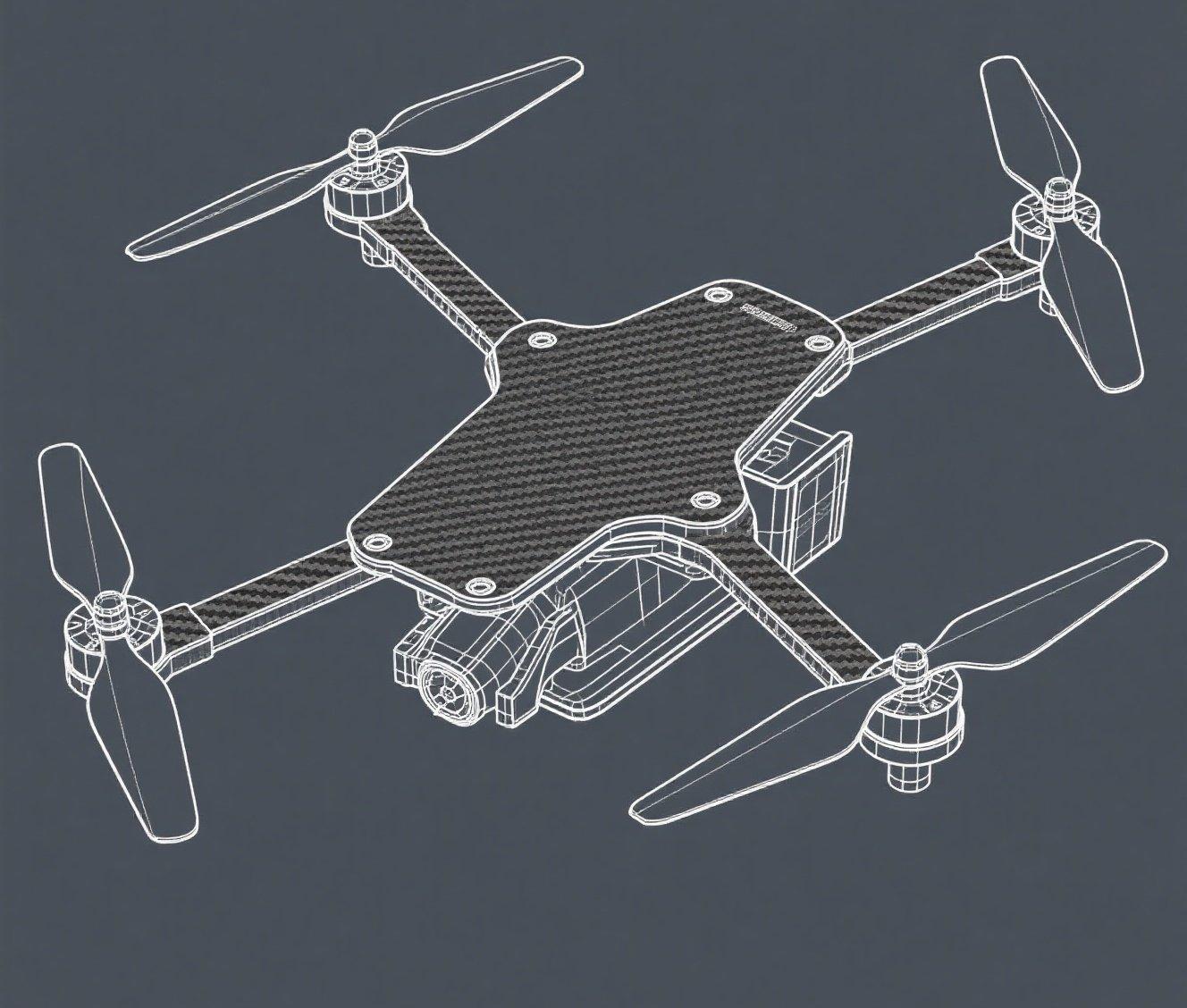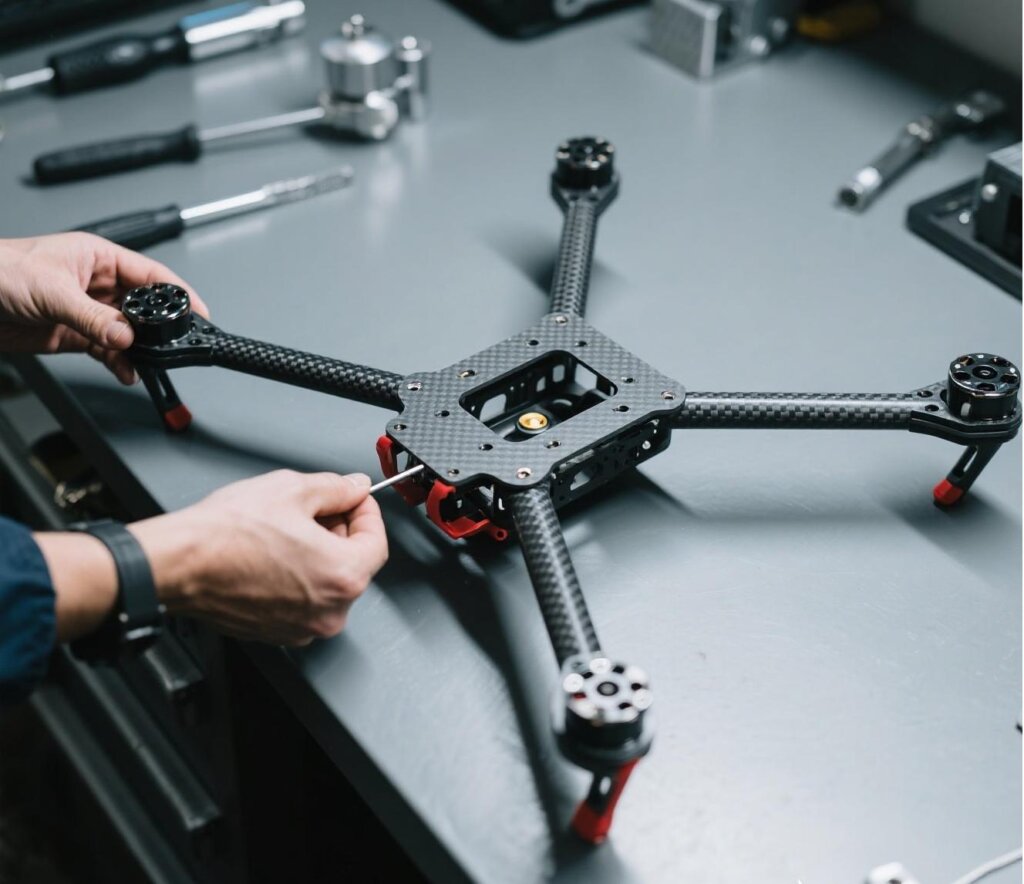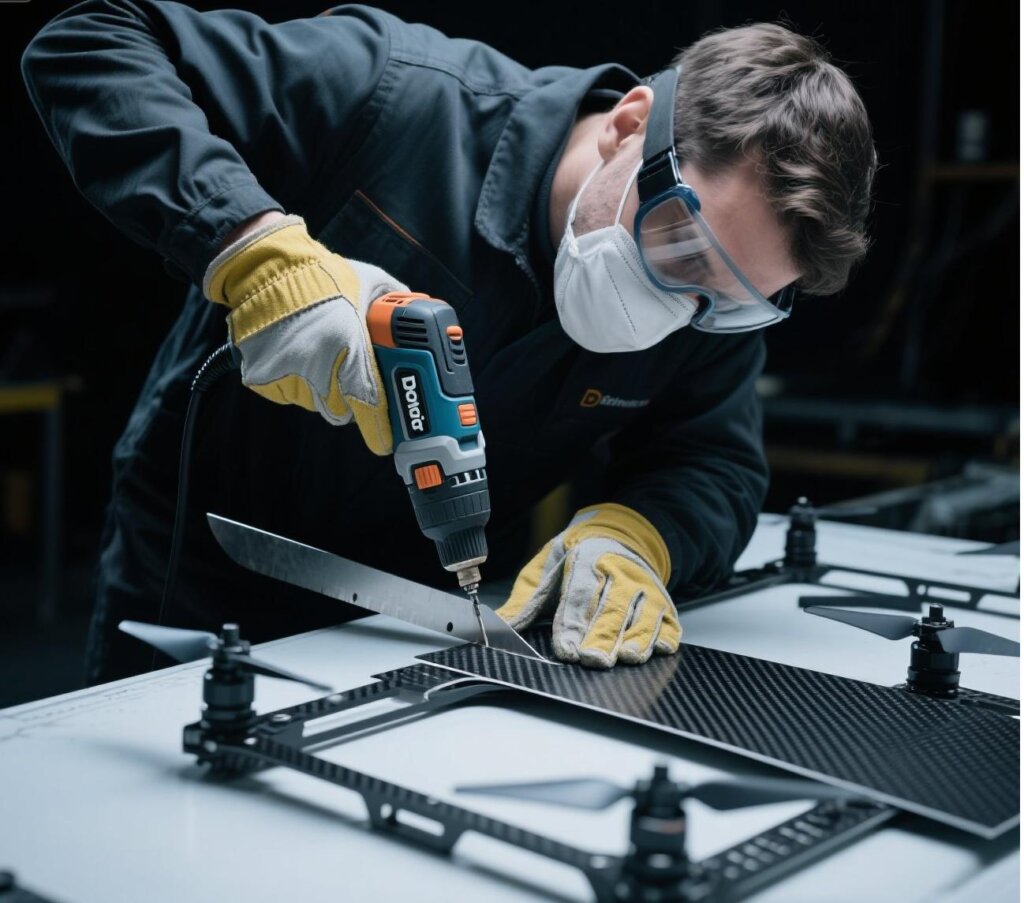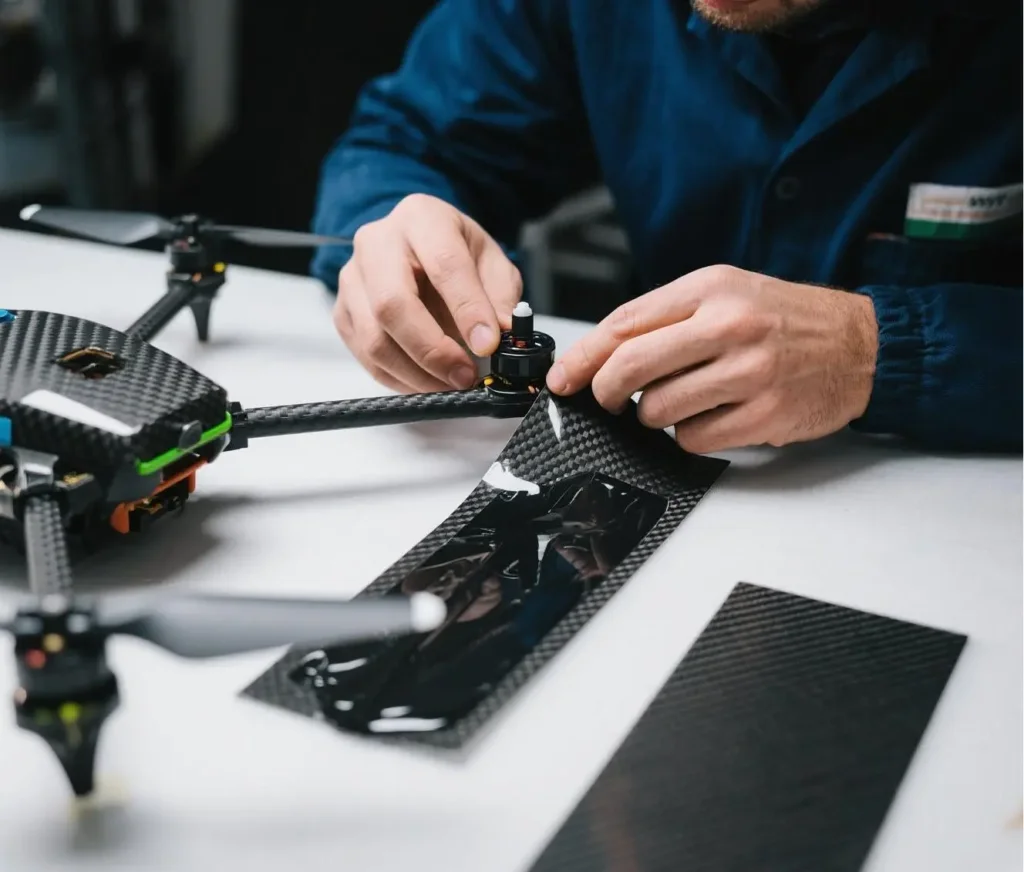
Building a custom drone offers immense satisfaction. You craft a machine perfectly suited to your needs. Many builders now favor carbon fiber for its awesome strength. This material provides an exceptional stiffness-to-weight ratio. Consequently your drone becomes agile and durable. This guide helps you construct a lightweight drone frame using carbon fiber sheets. We will prominently feature carbon fiber square tube elements for structural integrity. Prepare for an exciting build process ahead.
Why Opt for Carbon Fiber Sheets in Your Drone Frame Construction? Exploring Sheet Carbon Fiber Advantages
Carbon fiber presents a premier choice for Lightweight Drone Frame. Its adoption is widespread among hobbyists and professionals alike. The reasons for this popularity are compelling. Performance gains are immediately noticeable. Let us explore what makes this material special.
Carbon Fiber Sheets Key Features & General Benefits for Drones
Carbon fiber sheets bring numerous advantages. Their most lauded feature involves incredible strength coupled with low weight. This dramatically improves flight performance. Drones can accelerate faster and maneuver more sharply. Additionally battery life often sees improvement due to reduced overall mass.
Another key feature includes superior rigidity. A stiff frame resists flexing under load. This translates to more precise control during flight. Vibrations are also dampened effectively by carbon fiber. Better video quality results from a stable platform. Durability also stands out significantly. Carbon fiber can withstand considerable impacts. Minor crashes might not end your flying day. These characteristics make carbon fiber panel sheet materials a top pick.
References:
1. How To Cut Carbon Fiber Tubes: Key to Tolerance and Customer Relationships
2.How We Helped Our Client Solve Product Issues with Our Carbon Fiber Tubes?
3.How Strong Are Carbon Fiber Plates?
4.How to Improve the Surface Quality of Large Diameter Carbon Fiber Tubes
5.How Are Carbon Fiber Sheets Made?
Discovering Our Carbon Fiber Sheets: Properties for Peak Drone Performance
Our specific carbon fiber sheets offer exceptional qualities. We have refined our manufacturing for optimal material characteristics. You will find a consistent weave in every carbon fiber 4×8 sheet. This uniformity contributes to predictable strength.
The resin matrix we use provides excellent impact resistance. It also withstands environmental factors like temperature changes. Our flexible carbon fiber sheets allow for creative designs while maintaining strength. For builders needing specific shapes our forged carbon fiber sheet presents cool aesthetic and structural options. Using our carbon fiber square tube with these sheets creates an unbeatable combination. We believe these properties give your drone a distinct advantage.
Gathering Your Build Essentials: More Than Just a Carbon Fiber Panel Sheet and Some Glue
A successful drone build starts with proper preparation. You need correct materials and appropriate tools. Selecting quality components makes a big difference. Think beyond just the main sheet carbon fiber. Consider all supporting elements carefully.
Choosing Your Carbon Fiber: From a 4×8 Sheet of Carbon Fiber to Specialized Fabric Options
Many types of carbon fiber exist. A standard 4×8 sheet of carbon fiber is a common starting point for larger frames. You might find carbon fiber sheets near me at a local hobby shop. Online retailers like Amazon also stock carbon fiber sheets amazon searches reveal plenty.
Consider thickness carefully. Thicker sheets offer more rigidity but add weight. Carbon fiber fabric sheets are different. These are pliable before resin application. They suit complex curves or custom layups. Some builders prefer a forged carbon fiber sheet for its unique look and distributed strength. Your project dictates the best choice among these options. Also remember carbon fiber square tube for arms or supports.
Essential Tools for Precisely Working with Sheet Carbon Fiber Materials
Working with carbon fiber requires specific tools. Safety gear is paramount. Always wear a respirator or dust mask. Fine carbon dust is harmful if inhaled. Safety glasses protect your eyes effectively. Gloves are also a very good idea.
For cutting a carbon fiber panel sheet a Dremel tool with a diamond cutting wheel works well. A fine-toothed jigsaw or scroll saw can also manage. Wet cutting helps minimize dust. For drilling holes carbide-tipped drill bits are recommended. Standard bits dull quickly on carbon fiber. Clamps will hold your sheet carbon fiber securely during cutting. Accurate measuring tools like calipers and a steel ruler are indispensable.
Do Not Overlook Your Carbon Fiber Square Tube Structural Components!
While flat sheets form main plates carbon fiber square tube sections are vital. These often become drone arms or cross-supports. The square profile resists twisting and bending efficiently. Carbon fiber square tube offers a great way to mount motors.
Their hollow structure keeps weight low. Yet they provide immense strength where needed. Integrating carbon fiber square tube into your design early on is smart. This ensures connection points are well-planned. You can find carbon fiber square tube in various lengths and wall thicknesses. Choose based on your drone’s size and intended use.
Step-by-Step: How to Make Your Lightweight Drone Frame with Carbon Fiber Sheets
Now we reach the exciting part: construction. This process requires patience and precision. Follow these steps carefully for a great result. Your custom Lightweight Drone Frame will soon take shape. This method makes building straightforward.
Step 1: Designing Your Drone Frame (Planning for Carbon Fiber Square Tube Integration)
Good design is fundamental. Sketch your frame ideas first. Consider drone size motor placement and component layout. Software like CAD can help visualize precisely. Pay attention to arm length and central body dimensions.
Decide where carbon fiber square tube elements will attach. These points need secure mounting provisions. Plan for wire routing too. A clean build looks professional and is easier to maintain. Factor in weight distribution for balanced flight. Your design is your blueprint for success using any carbon fiber panel sheet.
Step 2: Transferring Your Design Meticulously to the Carbon Fiber Panel Sheet
Once your design is final transfer it onto your carbon fiber panel sheet. You can print your design onto paper. Then temporarily affix the paper template using light adhesive. Alternatively use a scribe or a silver marker. These show up well on black carbon fiber.
Accuracy during this stage is critical. Double-check all measurements before proceeding. Ensure all lines are clear and easy to follow. This step translates your vision into tangible cutting lines. Work on a flat stable surface. This helps prevent errors.
Step 3: Cutting Your Carbon Fiber Sheets Safely and with Utmost Accuracy
Cutting carbon fiber sheets demands care. Remember your safety gear always. A well-ventilated area is best for this task. If cutting indoors use a vacuum near the cutting tool. This captures dust effectively.
Follow your transferred lines precisely. Use a slow steady hand with your Dremel or saw. Rushing leads to mistakes or jagged edges. For straight cuts a clamped straightedge guides your tool. For curves take your time. Patience here pays off with clean parts. If you have a carbon fiber 4×8 sheet plan cuts to maximize material usage.
Step 4: Drilling Holes for Motors and Critical Carbon Fiber Square Tube Connections
After cutting frame plates you need holes. These are for motor mounts screws and carbon fiber square tube fittings. Mark hole locations accurately based on your design. Use a center punch to prevent your drill bit from wandering.
Drill perpendicular to the sheet carbon fiber. Use gentle pressure. Let the carbide bit do the work. Drilling too fast can cause delamination or splintering. A piece of scrap wood underneath supports the carbon fiber. This gives cleaner exit holes. Deburr holes slightly for a neat finish.
Step 5: Assembling the Frame Structure with Carbon Fiber Square Tube Elements
This stage brings your Lightweight Drone Frame to life. Begin by attaching your carbon fiber square tube arms to the main body plates. Use appropriate screws and standoffs. Ensure all connections are tight but do not overtighten. Overtightening can crush the carbon fiber.
Check frame alignment frequently. A square and true frame is crucial for stable flight. Use a right-angle tool if needed. Small adjustments now prevent bigger problems later. This assembly forms the core skeleton of your drone. The carbon fiber square tube parts provide amazing rigidity.
Step 6: Finishing Touches and Optional Reinforcements (Perhaps with Flexible Carbon Fiber Sheets)
Once assembled inspect your frame thoroughly. Sand any rough edges on the carbon fiber sheets using fine-grit sandpaper. Wet sanding is good for this. This improves handling and aesthetics.
Consider applying a thin coat of CA (cyanoacrylate) glue to cut edges. This can help seal fibers and prevent fraying. For areas needing extra impact absorption or a unique contour flexible carbon fiber sheets might be useful. These can be molded or applied to specific sections. Ensure all hardware is secure.
Advanced Building Tips for Working with Carbon Fiber Sheets and Components
Beyond basic assembly some techniques elevate your build. These tips help you achieve professional results. They also enhance durability or appearance. Consider these for your next project.
Working with Forged Carbon Fiber Sheet for Truly Unique Drone Aesthetics
A forged carbon fiber sheet offers a marbled look. This differs from traditional woven patterns. It is made from chopped carbon fibers compressed with resin. This material can provide excellent multi-directional strength.
Cutting and drilling a forged carbon fiber sheet is similar to standard sheets. The visual appeal however is quite distinct. It can make your drone stand out. Some builders use it for top plates or specific accent pieces. This adds a custom touch to your aerial platform.
Maximizing Frame Strength with Carbon Fiber Fabric Sheets Layering Techniques
For ultimate strength or custom shapes carbon fiber fabric sheets are fantastic. You lay these fabrics into a mold or over a form. Then you apply epoxy resin. This allows building up thickness and tailoring fiber orientation.
Orienting fabric layers strategically maximizes stiffness in specific directions. This is advanced but offers unparalleled customization. You can create complex aerodynamic shapes. This method is how many high-performance composite parts are made. It requires more equipment and skill however. The results can be incredibly strong and light.
Troubleshooting Common Issues When Building with Carbon Fiber Sheets: Solutions for Builders
Even with care problems can arise. Knowing how to address them saves frustration. Here are common issues and their solutions. This helps you overcome building hurdles.
One frequent issue is delamination or splintering during cutting/drilling. This often means your tool is dull or you applied too much pressure. Use sharp carbide bits. Apply steady light pressure. A backing material helps immensely. If minor delamination occurs use thin CA glue to stabilize the area.
Another challenge can be misaligned holes. Accurate marking is key here. If holes are slightly off you might enlarge them carefully. Ensure this does not compromise structural integrity. For stripped screw holes in a carbon fiber square tube you might use a slightly larger screw or a threaded insert. Always double check measurements before any drilling. Searching for “carbon fiber sheets near me” for quick replacements might be an option if a part is ruined. Or check carbon fiber sheets amazon for fast shipping.
Dust control remains a persistent concern. If your workspace gets too dusty stop and clean. Proper ventilation and dust extraction are not optional. They are for your safety. Always prioritize your health when working with any sheet carbon fiber.
Conclusion: Your Lightweight Carbon Fiber Drone Frame Awaits
Building a drone frame with carbon fiber sheets and carbon fiber square tube sections is a rewarding project. It offers a deep understanding of your aircraft. The result is a lightweight strong and high-performance machine. With patience correct tools and attention to detail you can achieve fantastic results. Your custom drone built with premium carbon fiber components will surely impress. Happy flying and even happier building! You have learned how to make something truly special.





5 Responses